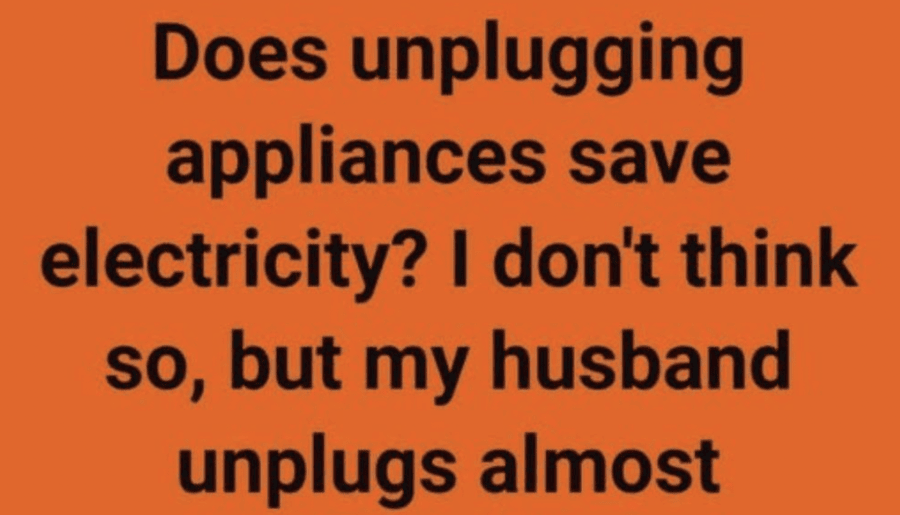Many of us enjoy the calm and quiet of our homes when we’re sleeping or out for the day. We switch off the lights, secure the doors, and believe everything is at rest. But what if your home is quietly active even when you’re deep in slumber? This isn’t about spirits or your teenager sneaking a late-night snack. It’s about something far more ordinary and subtly persistent: “vampire power.”
What Is Vampire Power?
Vampire power, also referred to as standby power, is the steady trickle of electricity consumed by many household electronics and devices, even when they appear to be turned off. This phenomenon might seem surprising, but it’s very much a reality. It’s called “vampire power” because it silently draws energy from your outlets without your awareness.
Consider the devices in your home at this moment. Is your television powered down? It’s likely still sipping some electricity. Is your coffee maker plugged in, its digital clock glowing softly? It’s “preparing for your morning brew—and consuming energy to do so.” What about your phone charger? If it’s “plugged in but not connected to a device,” it’s still pulling power. These small, continuous energy draws accumulate over time.
Why Vampire Power Matters and Its Financial Impact
Vampire power goes by several names, such as “phantom load,” “standby power,” or “leaking electricity.” It refers to the energy devices consume when they’re not in active use but remain connected to a power source. This occurs for several reasons:
- The device is “off” but still plugged into an outlet.
- The device is in “standby” mode, such as a TV waiting for a remote signal.
- The device has features requiring constant power, like digital clocks, indicator lights, or “instant-on” capabilities.
- A charger is connected to the wall without a device attached.
Some of the most common sources of this energy drain are everyday household items you might overlook. These include phone and laptop chargers left plugged in without devices, smart TVs, soundbars, and gaming consoles. Also included are coffee makers with digital clocks, computers, printers, and microwaves—“hello, glowing display.” Even chargers for smaller devices like electric toothbrushes or cordless vacuums can draw power when idle.
While each device’s energy use may seem minor, the combined effect is significant. These devices can account for 5% to 10% of your home’s total electricity consumption annually. This is like paying for a portion of your home you never use—an unnecessary expense that can be easily addressed.
How Much Can You Save by Reducing Vampire Power?
It’s wise to have realistic expectations about savings from unplugging devices. “Unplugging won’t turn you into a millionaire,” but it can certainly reduce your expenses. Depending on your home and the number of devices, you could save between $100 and $200 annually. That’s a meaningful sum to redirect toward other priorities.
To illustrate the costs, here’s a breakdown of what some common devices might cost you in standby mode each year:
- Gaming Console (like a PS5 or Xbox): These can cost between $30 and $60 per year.
- Cable Box or Satellite Receiver: These are significant energy drains, costing $40 to $80 annually.
- Coffee Maker (with a clock): Even small appliances add up, costing $10 to $15 per year.
- Laptop Charger (always plugged in): This may cost around $5 to $10 annually.
- TV and Soundbar: Together, these can cost between $25 and $50 per year.
When you multiply these costs across multiple devices, it becomes clear that this is “real money—gradually slipping away.” Taking straightforward steps to curb this can help you retain more of your earnings.
Devices You Should Not Unplug
Before you start “unplugging every cord in sight,” be aware that some appliances should remain powered for safety and convenience:
- Refrigerator and Freezer: Keep these plugged in unless you’re moving or away for an extended period. Unplugging them risks spoiled food and a messy cleanup. “Unless you want a smelly kitchen and ruined groceries,” leave them connected.
- Medical Devices: Equipment critical for health, such as oxygen machines or CPAP devices, must “stay secure and powered” at all times.
- Wi-Fi Router: If you depend on it for work or other activities, it’s often best to keep it on, though you could set a schedule to power it down at night.
- Security Systems and Baby Monitors: These are vital for safety and should remain plugged in. “Safety always comes first.”
- Modem or Router (for smart home devices): Many smart home systems require a constant internet connection, so keep these powered.
Additionally, some devices, like cable boxes, “take a long time to restart.” You should “balance convenience with savings” before deciding to unplug them.
Smart and Easy Ways to Reduce Vampire Power
You don’t need to become an expert at managing outlets to cut down on energy use. There are clever, low-effort strategies to minimize vampire power. “You don’t need to be an outlet master—just get smart about it.”
- Use Smart Power Strips: These are ideal for entertainment centers or computer desks. They can “cut power to secondary devices when the primary one is turned off.” For instance, when you switch off your TV, the strip can “stop power to the soundbar, gaming console, and streaming device.”
- Group Devices on a Power Strip: A standard power strip is a simple yet effective tool. Plug all your kitchen appliances—like the coffee maker, toaster, and blender—into one strip and flip the switch to turn them off at night. The same approach works for your entertainment center electronics.
- Unplug Chargers When Not in Use: This is one of the simplest and most impactful actions. “It takes just a moment—make it a routine like locking the door.”
- Choose Low-Standby Devices: When purchasing new electronics, look for the “ENERGY STAR® label.” These devices are designed to “minimize standby consumption” and save money over time. Opt for devices with simple on/off switches instead of always-on indicator lights.
- Adopt a “Last One Out” Habit: Before heading to bed or leaving the house, do a quick check and ask, “Did I turn off the non-essential devices?” Making this a habit can lead to substantial energy and cost savings over time.
By taking these steps, you can reduce vampire power, save money, and make your home more energy-efficient without disrupting your daily routine.




